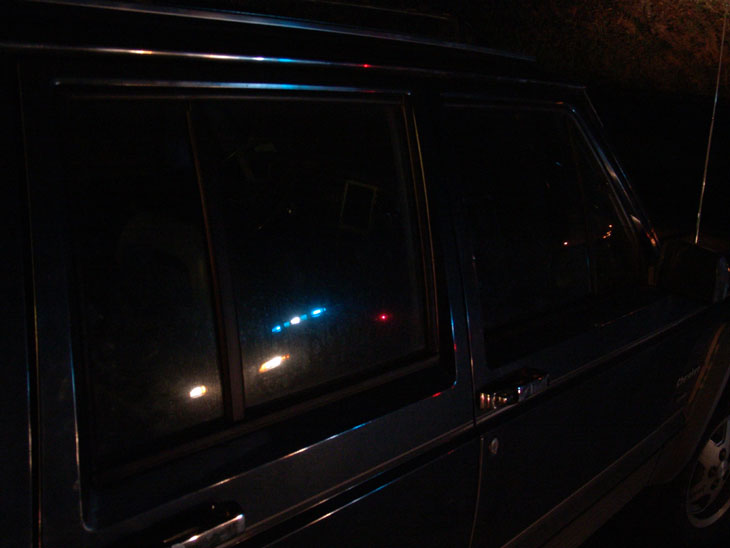
Moods and metaphors are present in a lot more images than many suspect, and in many cases they’re recognized only subconsciously. Being able to induce them in the viewer is one thing, but simply noticing when the opportunity presents itself to your camera is a directly related skill.
Sometimes it’s simple. When I say, “Dawn on the beach,” you automatically get a visual impression (even if you don’t know Dawn.) Chances are, you filled in details on your own, such as the beach being empty, the sky being clear enough to see the sun, no trash, and so on. You might even have stirrings of some emotion just from the associations. Others are often much harder to define, so it may take a bit of effort to pin them down. An empty bench may speak of an unused park, abandonment, old age, the rough part of town, and countless other things, depending on what other elements are in the frame. Very few metaphorical or mood-evoking subjects stand alone; they may be enhanced or suggested by lighting and contrast, surroundings, framing, even weather conditions. One drop of water in the right place is a teardrop, evidence of rain, or even a recently-used sink.
 One that few people register consciously, but virtually everyone knows instinctively, is lighting. Sunny days are very contrasty, with brilliant highlights but hard shadows. Overcast days have low contrast and no distinct shadows, but more importantly, the lighting color has gone much more blue because clouds filter out the red and yellow in sunlight – by extension, blue light seems cold to us. Alternately, light that is yellow, orange or red speaks of sunrise or sunset. We are also capable or reading light angles from the shadows, and get the same impressions.
One that few people register consciously, but virtually everyone knows instinctively, is lighting. Sunny days are very contrasty, with brilliant highlights but hard shadows. Overcast days have low contrast and no distinct shadows, but more importantly, the lighting color has gone much more blue because clouds filter out the red and yellow in sunlight – by extension, blue light seems cold to us. Alternately, light that is yellow, orange or red speaks of sunrise or sunset. We are also capable or reading light angles from the shadows, and get the same impressions.
Light plays another role, too. A subject facing into the light is optimistic, while facing away is depressing or even sinister. Harsh light is more tense, while low-contrast light is mellow. The difference in color, quality, and rendition is what makes candlelight different from streetlight, natural light different from artificial, and they all lend a different air wherever they appear. Using this, or better yet controlling it, can express different things in your images. “Wine” and “candlelight” together express intimate evenings and romance, and you’ll notice that there’s nothing else in the image at all – even the candle isn’t visible (actually, that’s not quite true, if you look close…)
While, on occasion, it is possible to offer anachronistic elements, subjects that clash with their surroundings insofar as the metaphor goes, it is usually far better to keep these in line so that the impression is strong. People can be confused by clashing elements, which leaves them unsure how to view the image, and weakens the emotional impact.
 Remember that the mood evoked by an image does not have to be pleasant to be powerful, and there’s a certain appeal in photos that deny the constant ‘happy thoughts’ of the advertising that surrounds us, even conveying the idea that they are more real. The discarded condom, graffiti, and generally unkempt conditions all contribute to impression of an encounter that was less than romantic, as well as speaking volumes about the local inhabitants. A beer can, slightly crumpled, would have rounded out the concept nicely. The elements make up a story or situation in the viewer’s mind because they all have distinct associations, and while they start to appear clichéish when examined closely, we have to remember that clichés are actually made up of common elements. The more known they are, the more direct the message is to the viewer.
Remember that the mood evoked by an image does not have to be pleasant to be powerful, and there’s a certain appeal in photos that deny the constant ‘happy thoughts’ of the advertising that surrounds us, even conveying the idea that they are more real. The discarded condom, graffiti, and generally unkempt conditions all contribute to impression of an encounter that was less than romantic, as well as speaking volumes about the local inhabitants. A beer can, slightly crumpled, would have rounded out the concept nicely. The elements make up a story or situation in the viewer’s mind because they all have distinct associations, and while they start to appear clichéish when examined closely, we have to remember that clichés are actually made up of common elements. The more known they are, the more direct the message is to the viewer.
Recognize, too, that the angle used here wasn’t at all how I first encountered the elements; having it work in this way required making the connection and seeing that I could frame the condom against the background for a stronger feeling [and I realize as I type this that I’m deconstructing a used condom as a photo element, which is scary in itself], which needed a low shooting position, a wide-angle lens, and a high depth of field. When the metaphorical properties of some photo subject present themselves, it’s up to the photographer to know how to enhance or supplement the idea within the frame. This might even entail controlling the lighting, or returning when the conditions are more effective. Fog, for instance, almost always gets me out searching for subjects or scenes that make the best use of it.
It should come as no surprise that the expressions of people within the image convey the strongest emotions, since we relate to what others feel – this even applies to the expressions that animals have, or seem to have (this is a distinction that I’m quick to make when speaking as a naturalist, but happy to exploit as a photographer.) Human expressions are a little tricky, though. A single person among many can convey a mood for all of them, especially if they’re either the dominant person in the frame or the one showing the strongest emotion. But a single person can also trash the mood, by displaying something that counters the others too much. As examples, notice how Hillary Clinton is the only one in this image that actually shows (apparent) anxiety, but it seems to serve for everyone – cover her over and boredom seems to take over. Yet, consider the wedding photo of the first dance, where just one person in the background is yawning while everyone else looks happy. How much does that affect the impressions of the image? Such appearances of emotion might even be fleeting or misleading, so timing is also important in conveying what the photographer wants.
 This is often what separates an artistic photographer from a technically proficient one (I make no claims in either direction); it’s not simply an image, but a method of directing and even manipulating the viewer to react in a chosen way. Advertising photographers use this all of the time, often to some degree of clumsiness, and such images are carefully staged. But there are different impressions from the viewer, depending on whether or not they believe the image is candid. We accept the manipulation of ad photos as typical (if perhaps crass,) but resent the idea in any image that we think is supposed to be ‘real.’ If I told you that I placed the condom in position, you would think considerably less of the image, not to mention what you’d feel about someone who would have something like that handy [I didn’t, on either account, just for the record]. We appreciate the skill in finding the strong metaphor or story, but far less in staging it.
This is often what separates an artistic photographer from a technically proficient one (I make no claims in either direction); it’s not simply an image, but a method of directing and even manipulating the viewer to react in a chosen way. Advertising photographers use this all of the time, often to some degree of clumsiness, and such images are carefully staged. But there are different impressions from the viewer, depending on whether or not they believe the image is candid. We accept the manipulation of ad photos as typical (if perhaps crass,) but resent the idea in any image that we think is supposed to be ‘real.’ If I told you that I placed the condom in position, you would think considerably less of the image, not to mention what you’d feel about someone who would have something like that handy [I didn’t, on either account, just for the record]. We appreciate the skill in finding the strong metaphor or story, but far less in staging it.
Sometimes, the metaphoric idea within the image isn’t strong enough to let it stand on its own as an artistic or evocative image, but works much better when accompanying an article or story – I use this from time to time myself, right here. The simple ideas conveyed therein help illustrate the overall tone of the writing, as well as breaking up walls of text, which tends to be more inviting to the reader (or so the theory goes.) These types of images have a wide variety of uses and do not have to be especially poignant, even though on first glance they might be only vaguely interesting. When illustrating abstract concepts, there are very few specific images that could be used, particularly to communicate the concept directly on their own, but quite a few that might complement the written expositions.
Developing the eye for these takes time, and the ability to interpret simple elements in terms of the feelings or messages they can produce in the viewer. Most photographers, I suspect, stumble across them, rather than specifically seeking images that fit a certain bill, so it becomes more a matter of studying one’s surroundings with the goal of asking, “What does this say?” Once the initial idea has presented itself, the effective photographer can then compose the image to present the mood or metaphor as distinctly as possible, hopefully creating an image that speaks those ‘thousand words’ and sparks the strong emotional reaction from the viewer. The technical aspects of wielding the camera are nothing compared to learning the artistic aspects, so don’t expect to pick this up quickly – study those images that produce strong feelings within, and try to deconstruct them to see how the visual cues evoke the emotional responses. It’s a great way to get your conscious and subconscious on speaking terms ;-)





















































